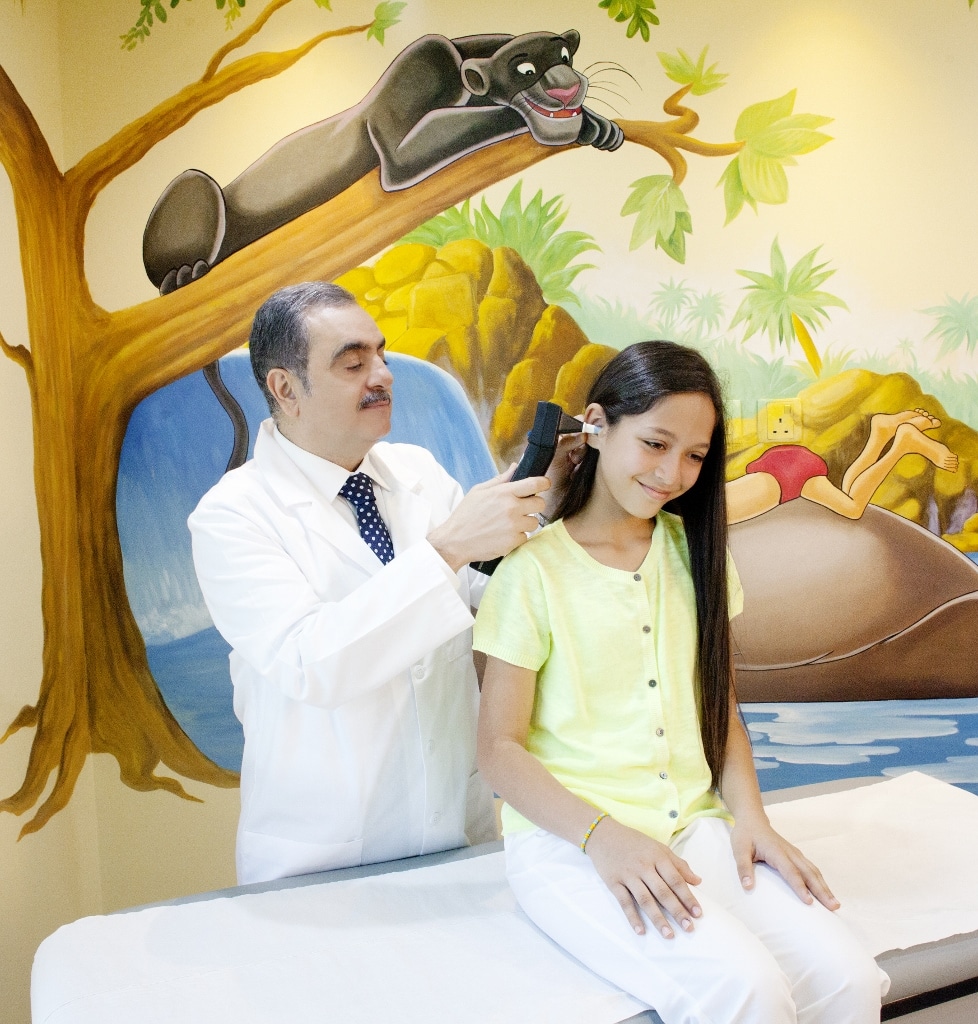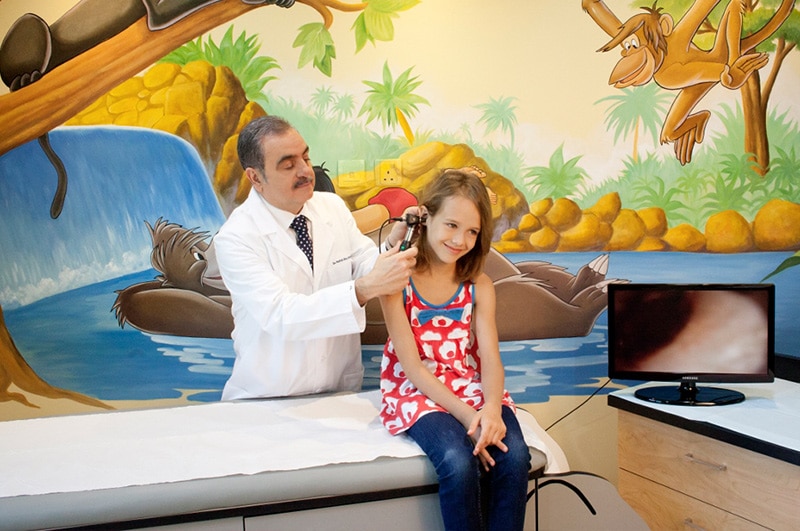Fluids in the middle ear may have no symptoms, but they can cause frustration for the child in addition to speech delay and hearing loss.
How can fluids in the middle ears be detected?
Fluids in the middle ear are best detected using a tympanometer. A medical tool that tests the condition of the middle ear and mobility of the eardrum (tympanic membrane) and most importantly to detect fluids in the middle ear which is the leading cause of hearing loss and speech delay in children.

Do all pediatricians have a tympanometer?
Some clinics, including myPediaclinic, do have a tympanometer.However, not all pediatricians have a tympanometer to check fluids in the ears.. Instead most clinics use an otoscope which is not always sufficient for detection of fluids in the middle ear.
What is an otoscope?
An otoscope is a medical tool used to check infections in the ear.At myPediaclinic we use a video otoscope.
What is the difference between an otoscope and a video otoscope?
A video otoscope displays a magnified view of the inside of the ear on a computer. This is to allow parents and children to visualize what the doctor sees, which is fun for the children and more importantly very informative for the parents to better understand the child’s diagnosis and treatment.
What are signs that the child may have fluids in the ear?
- Child is touching his ear frequently
- Child is turning up the TV loudly
- Child’s name gets called several times before responding
- Child may be touching their ears frequently
- Child may be delayed to speak
- Child may have had previous ear infections
- Child often snores at night
- Child has frequent allergies
To see how the tympanometer works and learn more about ear health, you can watch Dr. Medhat Abu Shaaban from myPediaClinic in his interview with MBC discussing fluids and infections in the ear in details.





